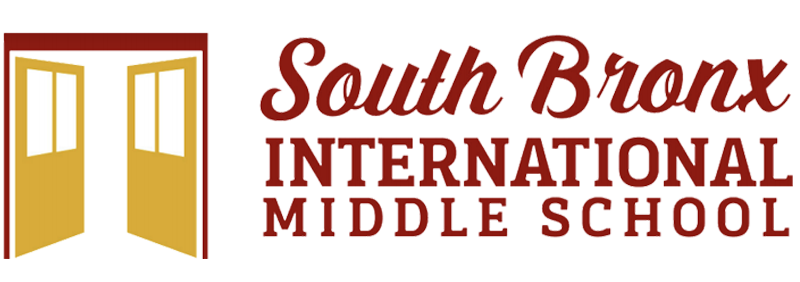Student Led Conference
The Student-Led Conferences is a practice that cultivates student motivation and ownership by giving students responsibility to self-manage their learning. The cycle involves five stages:
1) Look at data (i.e., report card, work samples, test scores)
2) Set goals with students and families in September and determine actions that will be taken to work towards that goal.
3) Work to accomplish the goal.
4) Demonstrate competency.
5) Reflect on learning and progress.

Student led conferences take place twice yearly. During this time, students report on their progress and share work that illustrates their growth in each area: Habits of Heart and Mind and the three learning target areas: knowledge, skill and language – and articulate their plans for improvement in the next cycle. Students will present to a panel of the advisor, teacher/s, families, peers and other community members. This is a powerful experience for students as they are at the center of this process. This high leverage practice not only provides students with confidence, but supports students in their public speaking skills.
Look at data Set Goal and Actions Work Demonstrate Competency Self-Assess Advisors will work with classroom teachers to support students’ selection of work to present at SLCs. Advisors will coach students in all aspects of preparing for their SLC- from gathering appropriate work to present, to writing their script, to rehearsing. School personnel will support SLC implementation by providing time for staff to meet to plan, supporting the scheduling of conferences, and inviting the larger school community to attend the conferences, further validating the importance of the student-led conference structure.
Assessing Student Work
Student work at South Bronx International Middle School is assessed using a standards-based format that provides students with feedback about whether or not they have met a given learning target. Our approach to grading reflects a growth mindset and should communicate that to our students. In most cases work is assessed using the following format:
| Level of Performance | Numeric Value | Relationship to Grade-Level Expectation |
| Exceeds the target | 4 | Above grade level |
| Meets the target | 3 | At grade level |
| Partially meets the target | 2 | Approaching grade level |
| Does not meet the target | 1 |
Below grade level |
Long Term Learning Targets are crafted by teachers and submitted for review along with the unit plan and standard-target assessment planner. Teachers will meet with the principal and/or coach for feedback on learning targets and the unit plan. Teachers are expected to craft learning targets that are standards aligned and address knowledge, skill and language. Retakes on summative assessments are permitted. Student test corrections and test reflections to support mastery are encouraged. The higher score is the score of record that will be factored into the grade. In addition, the revision of student work products to support mastery is required. Teachers are responsible in providing the feedback to students improving student work products to support mastery.
What do these performance levels say about student achievement of a particular learning target?
1 = Does not meet the learning target:
A “1” is given when a student does not demonstrate meaningful progress toward meeting the standards or criteria of a given assignment by an established deadline. This may mean that a student has not met the majority of performance indicators or criteria for that assessment, or that they have not genuinely attempted to meet the rubric criteria.
2 = Partially meets the learning target:
A “2” is given when a student has demonstrated a meaningful attempt to meet the standards of a given assessment by the established deadline, but needs more time to achieve competency. This may mean that a student has met a majority of the performance indicators or criteria for the assessment or genuinely attempted to meet the rubric criteria.
3 = Meets the learning target:
A “3” is given when a student’s work fundamentally meets the standard being assessed and the assessment requirements. It is competent work that demonstrates that essential skills and knowledge for that grade level or content area. All the criteria in the rubric are demonstrated in the work.
4 = Exceeds the learning target:
A “4” is given when a student’s work goes substantially above and beyond the grade level expectations for quality. The work may not be perfect but it includes complexity, sophistication, originality, depth and/or application that clearly exceeds what would be expected to meet the standards in this assessment.
Rubrics
On any given assignment or assessment, students receive feedback on the appropriate learning targets using the system described above. Each level of performance is further explained using the scoring rubric for the assignment or assessment. Giving students feedback in this manner puts student progress toward learning targets in the center of the process. We discourage teachers from translating this information into numeric or letter grades at this point in the process.
Resubmitting Work
Students may retake an assessment or resubmit a piece of work in order to provide evidence of increased performance. It is essential when resubmitting work that students comply with the teacher’s policy regarding these opportunities. For example, a teacher may require that projects be resubmitted within a specific time frame or may require students to take certain steps (peer tutoring, teacher conference, etc) before being eligible to resubmit work. When a student retakes an assessment or re-submits a project, the most recent work is considered as a representation of the students’ current performance level.
